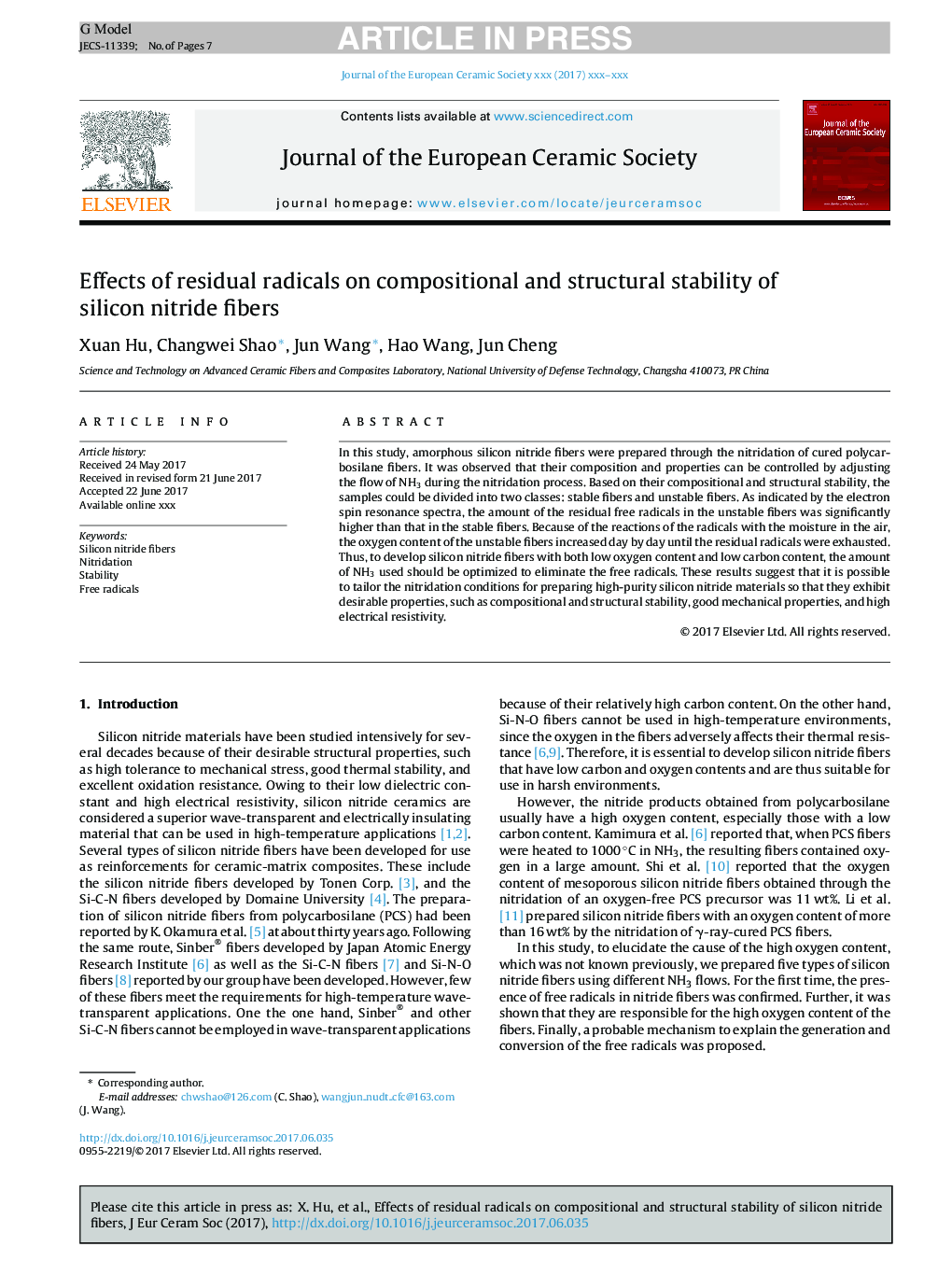| Article ID | Journal | Published Year | Pages | File Type |
|---|---|---|---|---|
| 5440306 | Journal of the European Ceramic Society | 2017 | 7 Pages |
Abstract
In this study, amorphous silicon nitride fibers were prepared through the nitridation of cured polycarbosilane fibers. It was observed that their composition and properties can be controlled by adjusting the flow of NH3 during the nitridation process. Based on their compositional and structural stability, the samples could be divided into two classes: stable fibers and unstable fibers. As indicated by the electron spin resonance spectra, the amount of the residual free radicals in the unstable fibers was significantly higher than that in the stable fibers. Because of the reactions of the radicals with the moisture in the air, the oxygen content of the unstable fibers increased day by day until the residual radicals were exhausted. Thus, to develop silicon nitride fibers with both low oxygen content and low carbon content, the amount of NH3 used should be optimized to eliminate the free radicals. These results suggest that it is possible to tailor the nitridation conditions for preparing high-purity silicon nitride materials so that they exhibit desirable properties, such as compositional and structural stability, good mechanical properties, and high electrical resistivity.
Keywords
Related Topics
Physical Sciences and Engineering
Materials Science
Ceramics and Composites
Authors
Xuan Hu, Changwei Shao, Jun Wang, Hao Wang, Jun Cheng,
